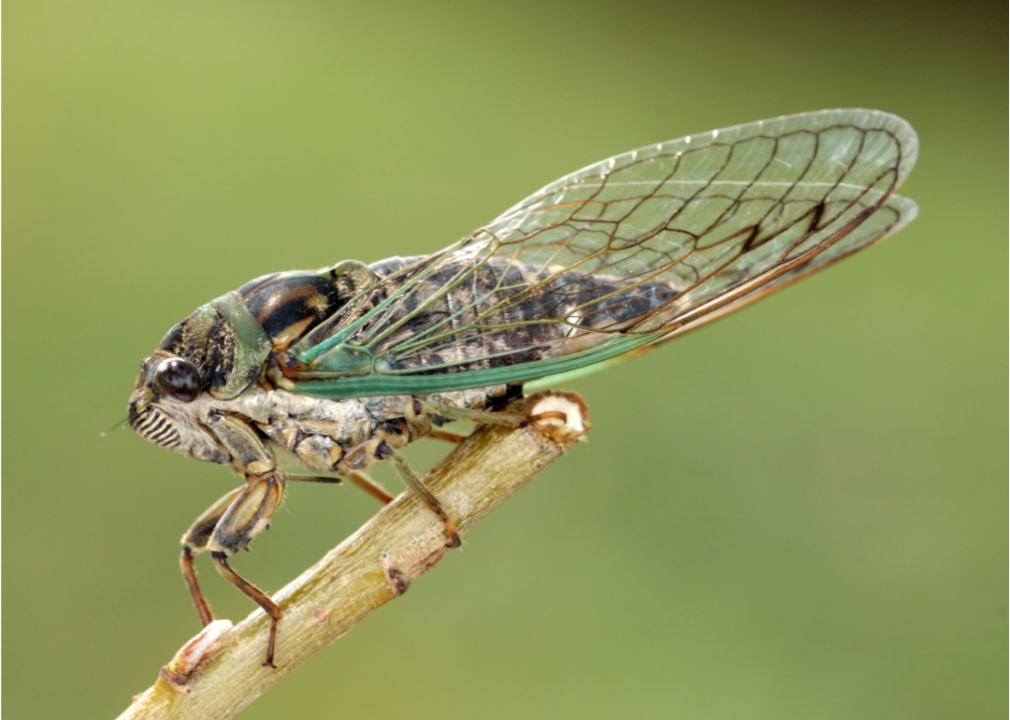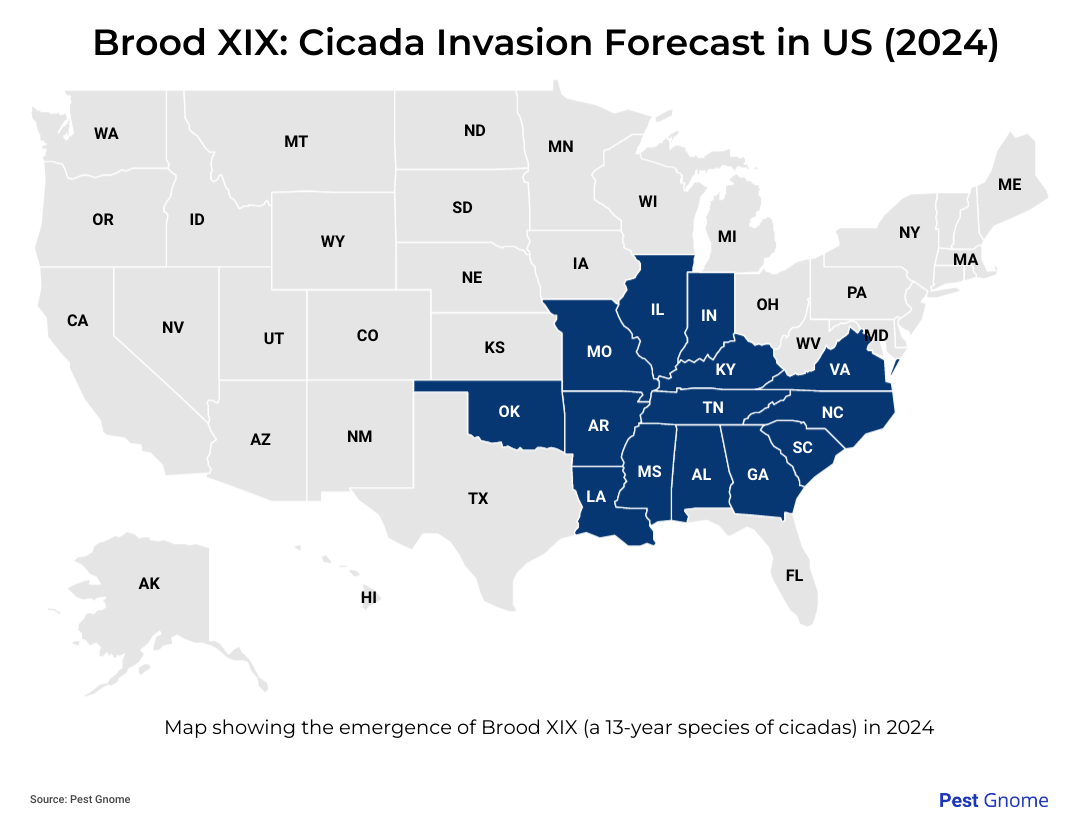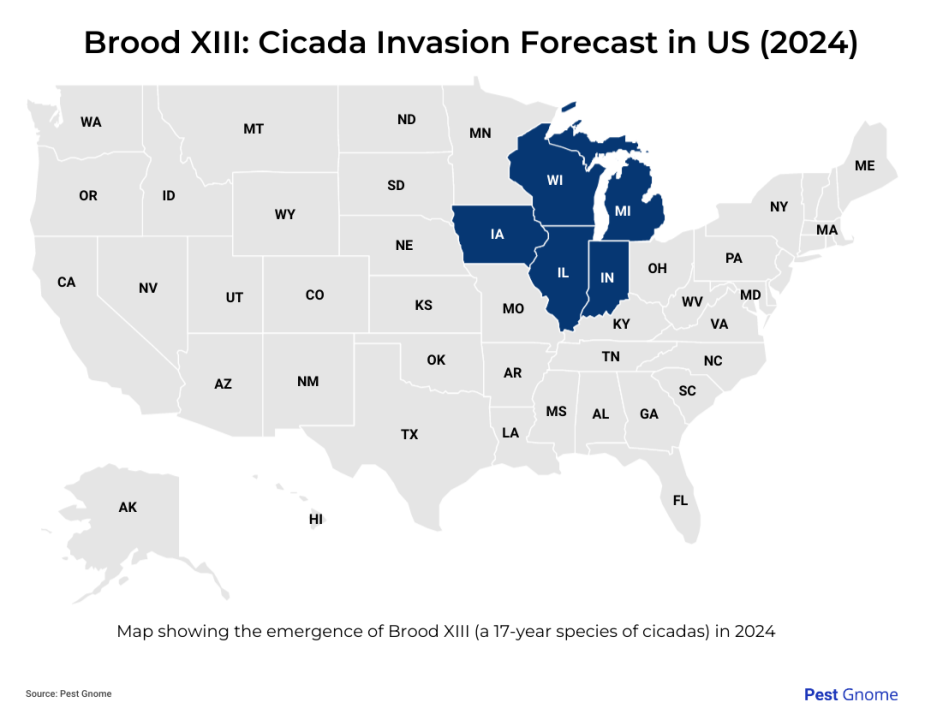
2024 will be a banner year for cicadas—and homeowners desperate to get rid of them. There are two types of cicadas in the world, one that emerges every 17 years and another every 13 years. In 2024, both are coming up from the ground for the first time in 221 years.
This means billions of cicadas will be emerging, largely in the Midwestern and Southern United States.
Pest Gnome explores the looming two-pronged massive cicada invasion and what you can do now to limit damage to your lawn and protect your trees.
This year we will see swarms of Magicicada—but the name doesn't mean they're magic, nor are they like the Wise Men of the Magi following a yonder star. Magicidada simply refers to the taxonomic genus within the family Cicadidae.
Adult cicadas vary in size depending on the species but usually have the following characteristics:
There are two basic groups:
Why cicadas rise up from the ground:
The following maps show the areas that will see the biggest invasions.

In 2024, Brood XIX (Magicicada neotredecim and Magicicada tredecim), a 13-year species of cicadas, will emerge in:

Also in 2024, Brood XIII (Magicicada septendecim, Magicicada cassini, and Magicicada septendecula), a 17-year species, will emerge in:
The 2024 cicadas will emerge after leaves appear on trees. Think late spring. You can't prevent cicadas from coming, but you can limit the damage to your yard and your hearing.
The billions of cicadas that emerge will quickly make their way to trees. To protect your trees:
Cicadas won't eat the leaves of trees, but cicadas will damage them:
Fruit trees, nursery trees, and trees recently transplanted are at greatest risk.
How to get rid of cicadas? That's not easy.
Don't try to get rid of cicadas by using insecticides, the EPA says. You're wasting your time and money. Here's why:
If you must use insecticides in your cicada fight: Bifenthrin is a synthetic version of an element found in chrysanthemums. It is toxic to insects and pets (due to their small size) but not to humans, according to the National Pesticide Information Center.
Hire a pest control pro to get rid of cicadas
It will take a lot of your time and money to constantly battle the tens of thousands of cicadas that can emerge on your property. You might want to bring in a local pest control pro.
The cicada forecast has pest control pros on watch and ready in regions expected to experience this year's plagues of cicadas.
So what can you do to get rid of cicadas? Maybe you don't need to get rid of them. Maybe you can tolerate the buzz and invasion for a month. Cicadas don't live long – maybe four weeks.
Why you might want to tolerate cicadas
Some reasons you might not want to get rid of cicadas:
Cicadas won't harm you, but they may bedevil you and your family for a few weeks.
How to deal with the billions of cicadas expected this year? Be strong and try to put up with them, eat them, or hire a pest control pro near you. Pros should be ready to deal with all these pests.
Don't try to get rid of cicadas by using insecticides. The EPA and NIH both say insecticides won't work and have no effect.
This story was produced by Pest Gnome and reviewed and distributed by Stacker Media.